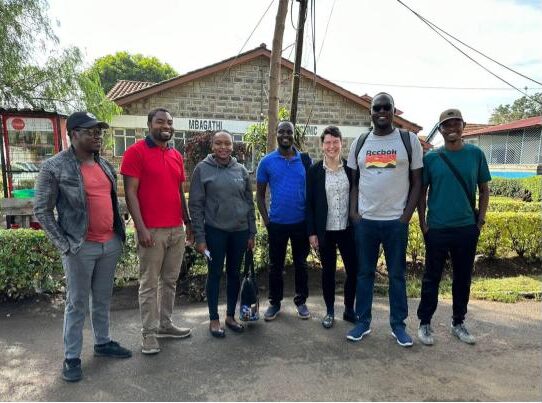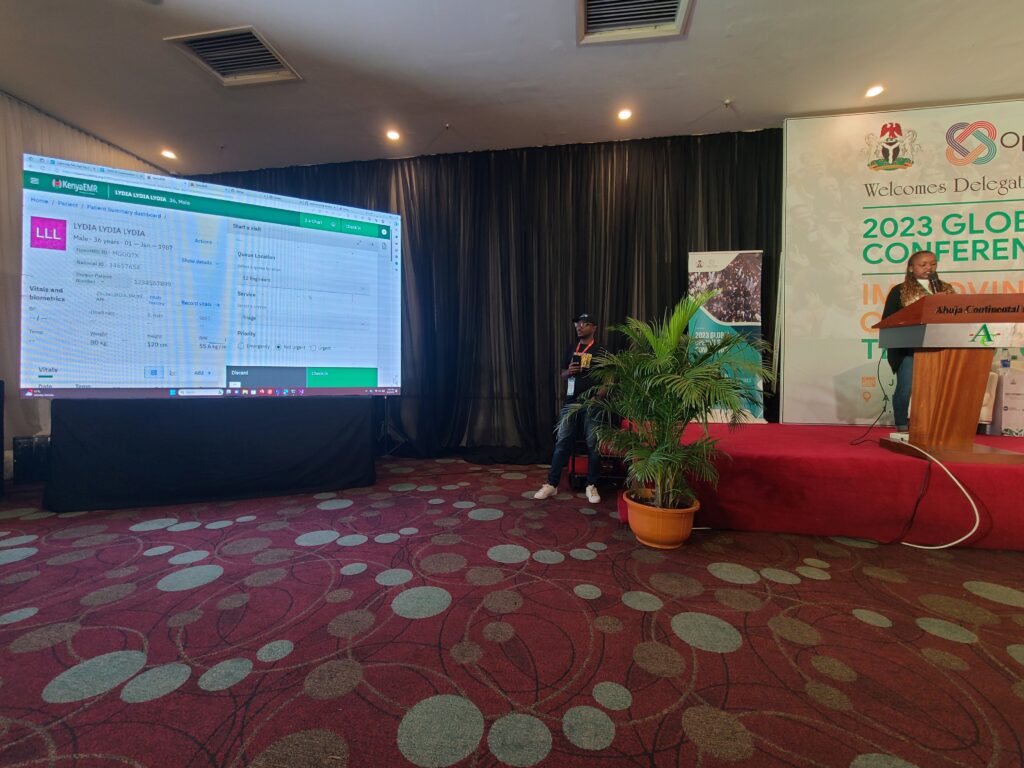Transitioning to OpenMRS 3: A New Experience for Current Implementations
At some point, all software undergoes a significant evolution. OpenMRS is no different. Since its inception in 2005, OpenMRS has seen its share of technology shifts and updates. Whether it is an update to core technologies and tooling or new features and functionality, these improvements often find their way to OpenMRS implementations through platform, module, or reference application releases.
Kenya has been with OpenMRS from its beginning. In collaboration with the Ministry of Health and PEPFAR implementing partners, Palladium Kenya supports and maintains KenyaEMR in over 2,000 health facilities. Today, Palladium Kenya is once again at the forefront of OpenMRS implementations as it adopts and integrates OpenMRS’ new frontend framework with KenyaEMR’s traditional user interface. At least 10 health facilities are already running the existing KenyaEMR frontend alongside OpenMRS 2.x
The Transition Challenge
For the past three years, the OpenMRS Community and several highly engaged organizations explored and completed foundational work to transition OpenMRS to a new, user facing frontend built on microservice technology. This shift not only brings a modular approach similar to what implementers already experience with the OpenMRS backend; it also breaks down the barriers to sharing features that many OpenMRS technical teams face. We call this next evolution of “OpenMRS 3”, or “O3”. Learn more about our product journey here.
OpenMRS implementers, like Palladium in Kenya, already know what it takes to stay current with OpenMRS backend updates. Similarly, their technical team knows that updating the KenyaEMR frontend from a customized user interface to the new OpenMRS Community frontend is a significant undertaking. Current users will need to navigate and adopt tangible changes to the KenyaEMR user interface with which they are already familiar.

Antony Ojwang and the Palladium-Kenya team take OpenMRS Director of Product Grace Potma and OpenMRS Frontend Mentor Dennis Kigen on a tour of a local health facility.
But what if there was a way for implementations to introduce new frontend features over time, without asking users to use a completely new interface all at once? What if they could build functionality that meets Kenya’s needs and share that with other implementers, while also having the flexibility to leverage functionality built by other implementing partners? What if implementations had an easy to use tool that could help them rapidly migrate existing forms built with older technology to new forms for OpenMRS 3?
Leadership: Prioritization & Alignment
In 2022, Palladium Kenya embarked on a journey to transition their customized KenyaEMR application to OpenMRS 3. The team leading this journey took three essential steps on this road: they 1) made this transition a priority; 2) ensured alignment with Palladium Kenya’s project leadership and management teams, with their client, and with the OpenMRS Community; and 3) documented the value proposition of the transition to implementers and users. These three steps led to proper resourcing, a common barrier to success and collaboration on similar projects.
Part of the prioritization process meant connecting with Grace Potma, OpenMRS’ Director of Product, to identify several features on the KenyaEMR roadmap that could be easily re-used or built using OpenMRS 3 technologies, such as a new Appointments module, Service Queues module, and integration with a Kenya’s National client registry using a master patient index-like solution.
Technical Collaboration Leads to Innovative, Community Tooling
In making this transition, a squad consisting of business analysts, UI/UX designers, quality assurance experts, and developers from Palladium Kenya’s technical team actively participated in several hackathons with their counterparts, including AMPATH and three partners from the Center for Disease Control and Prevention’s Technical Assistance Program (TAP): OpenMRS, University of California San Francisco, and University of Nairobi.

Cynthia Kamau of Palladium-Kenya presents KenyaEMR 2.x with 3.x features at the 2023 OpenMRS Global Conference in Abuja
Another important step was taken during these hackathons: everyone involved started to use shared community technical tools and practices, such as the community’s new O3 design system, squad conventions, and coding standards. Using the same design system as the OpenMRS Community means that Palladium Kenya can tie things together in a cohesive way. It also means that Kenya can more easily adapt features built by other organizations developing in OpenMRS 3, such as Bahmni Appointments.
One of Palladium’s first actions was to build a tool that makes it easier to migrate legacy OpenMRS HTML forms to the O3-compatible schema. Through two local hackathons with AMPATH’s tech team, Palladium not only migrated their legacy forms but validated the O3 HTML Form Entry (HFE) schema converter, a key step that led to broader adoption of their converter by the OpenMRS Community. By then showcasing the HFE form migration tool to the OpenMRS Community, Palladium Kenya makes it possible for other OpenMRS implementers to benefit from this same tool and automatically convert their existing forms into an OpenMRS 3.
Sustainable Results that Health Care Workers Can See & Use
For health care workers using KenyaEMR, much of the work going into this transition is unseen. What they can see and do now is toggle between the current KenyaEMR 2.x Patient Chart and these newer OpenMRS 3 features, delivered incrementally. This gives them the ability to continue delivering services: even if a new user interface fails to work as expected, they can simply go back and use the previous interface.
Palladium also discovered recent advances in community tools that help manage new concepts and migrate existing concept mappings. By adopting this new concept management tooling, business analysts now have the ability to handle concept mappings in collaboration with Open Concept Lab’s Joe Amlung at Regenstrief Institute.
All of this means that teams from each organization can easily re-use and create tech that other organizations can also improve and leverage. Palladium Kenya’s tech team is rapidly becoming a leader when it comes to contributing to OpenMRS 3 and getting OpenMRS 3 in front of real users. They find that this approach lowers the threshold for people to start working because they don’t have to build their frontend in a very OpenMRS specific way, allowing implementers to respond to country-specific requirements – while also reducing duplication (and cost) of development effort. By making resources available and developing these new O3 features and tooling with the community, Palladium Kenya is sharing the lift and sharing the risk – leading to a more sustainable OpenMRS.
